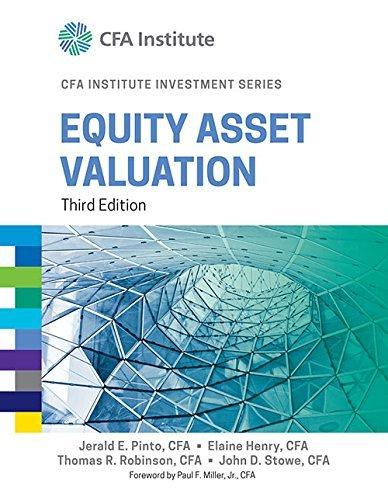Duvall, the manager of the corporate venturing unit introduced in Example 1, has decided to make a
Question:
Duvall, the manager of the corporate venturing unit introduced in Example 1, has decided to make a bid for Able Manufacturing. Duvall has decided to use an income approach to value Able. As stated in Example 1, Able’s debt is \($2\),000,000. Considering the nature of Able’s business, its size, and the financial leverage used by competitors, Duvall has concluded that Able has a low level of debt relative to its capacity and that it will be optimal to increase its debt if Duvall’s unit succeeds in purchasing Able. Because of that anticipated change in leverage, Duvall has decided to use an FCFF approach rather than FCFE to value Able.
Based on available information, Duvall makes the following assumptions:
• Long-term growth of revenues and after-tax operating income is 3 percent annually.
• The gross profit margin will remain at 40 percent.
• Depreciation will remain at 1.8 percent of sales.
• SG&A expenses can be maintained at the prior year’s level of \($3\),700,000 at least for two years.
• Working capital equal to 10 percent of revenues is required (e.g., if the increase in revenues is \($X\) from the prior year, additional working capital of 0.10 × \($X\) would be needed).
• Capital expenditures are expected to equal projected depreciation expense (to support current operations) plus 5 percent of incremental revenues (to support future growth).
i. Should Duvall use reported earnings or normalized earnings in estimating FCFF for Able? Explain.
ii. Forecast FCFF for Able for the upcoming year (from the perspective of a knowledgeable buyer).
Step by Step Answer:






